- Homepage
- News and Features
- Good morning from the links: here's what happens before play begins at The Open
Good morning from the links: here's what happens before play begins at The Open
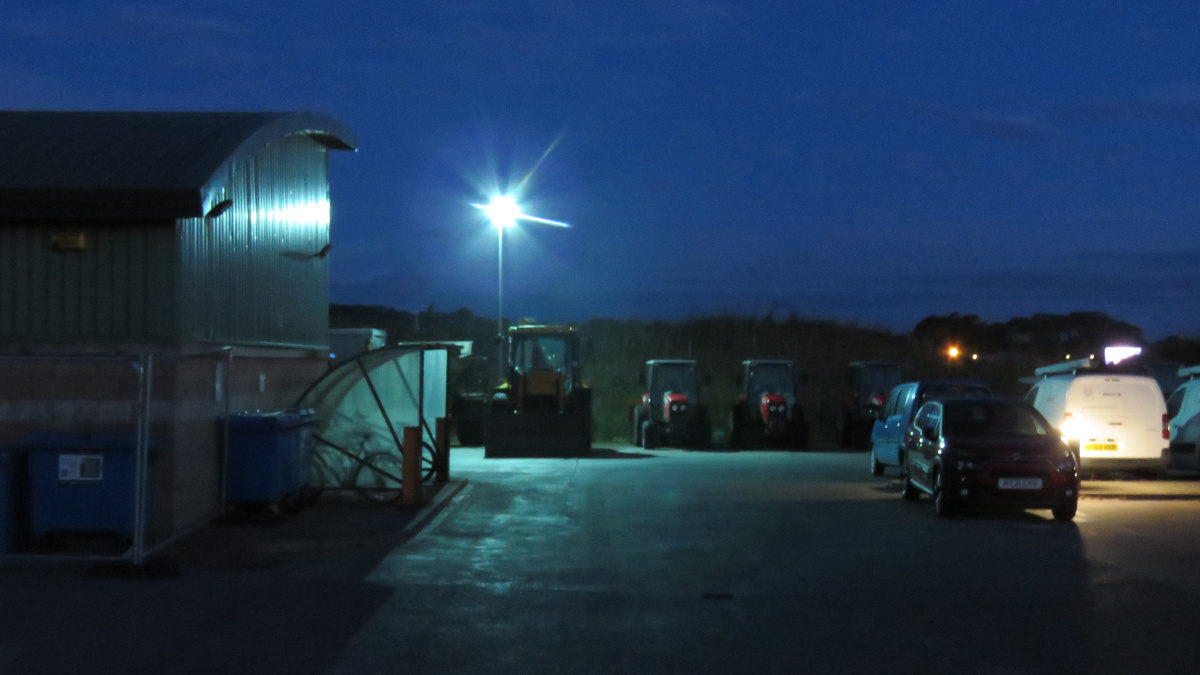
A full moon sets behind the Old Course Hotel.
It’s dark on the links, but it soon won’t be.
It’s quiet on the links, but it soon won’t be.
Days are long this time of time of year in Fife and when your golf course is hours away from hosting The 150th Open, they are even longer.
In the Jubilee maintenance facility, there’s a set of stairs that comes out of the ground, like the players’ tunnel at a sports stadium or a trapdoor on a stage. One by one, out of this access point ventures a key cog in the hosting of the championship. Dressed head to toe in black, they move with a quiet efficiency and purpose. The greenkeeping team at St Andrews Links are ready for the biggest day of their working lives.
In his office, Gordon McKie pulls on a jumper and coat. “Right, let’s get to it,” he says. It’s 4am and it’s time for the team’s morning briefing.
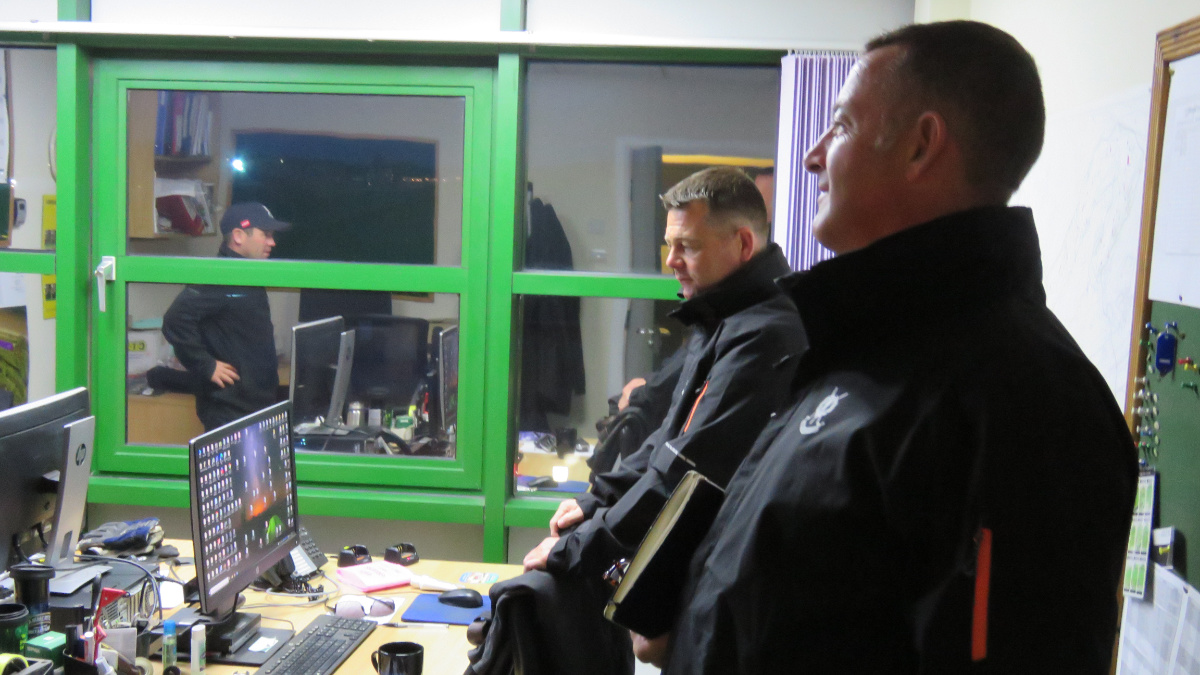
Heading out the sheds, Gordon makes his way to a marquee set up to cater for the 45-or-so greenkeepers who are responsible for preparing the course for this most historic of events. Most are drawn from across St Andrews’s seven courses, but some are experienced greenkeepers brought in from elsewhere to supplement the team.
Microphone in hand, Gordon addresses the team: “We’ve finally arrived, day one of the 150th Open Championship and the 30th playing of The Open at St Andrews, so it’s a huge privilege for us all to be here. Let’s embrace that history and put on a show for the world over the next few days.”
There’s praise for everything the team has achieved over the seven years since St Andrews last hosted this event, which includes developments such as the rebuilding of bunkers and alterations to various greens and tees.
“The feedback we’re getting on golf course condition is phenomenal,” Gordon continues. “Day one is a very special day for us all. Nobody else is going to have the honour of doing a 150th Open and there’s not going to be many people here in the room who’ll be here for the 175th, so it is an honour for us to be here and do this. Let’s go out there and deliver as we know we can."
The instructions for the team this morning are fairly simple: suppress the excitement, retain your professionalism and take your time – but not too much as Paul Lawrie is first out in less than two hours.
Out on the course and it’s already getting light. St Andrews is in the early stages of a drought and that means the grass is dry and brown. Just like us, when it is under high stress, it doesn’t take too much to break out in an illness or blemish of some sort. So, for those using the electric ride-on mowers there are to be no sharp turns and you must treat every inch of the links with care.
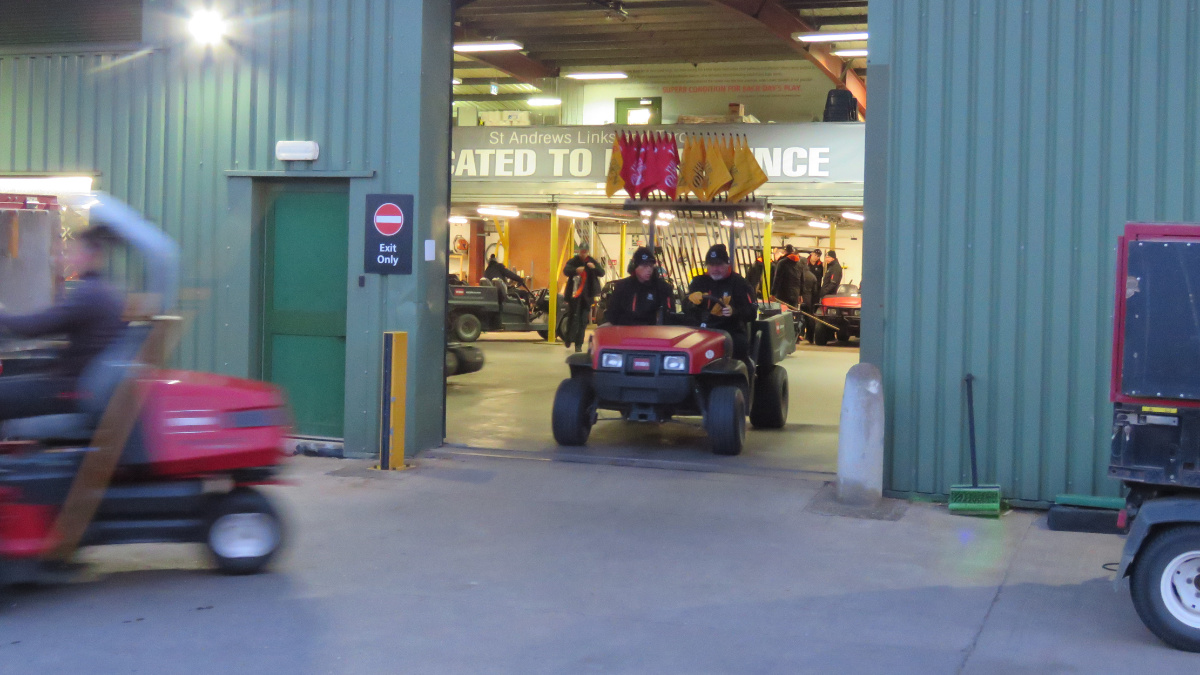
I don’t know how they make tartan, but you can imagine that were you to attach a tracer to each of the mowers weaving in and out of each other on the historic fairways, it might just resemble the famous patterned cloth.
The plan for the greens was just a single cut on the greens, although the greenkeepers may be asked to run over them once again if the speed isn’t quite what the organisers are looking for. The R&A’s team of championship agronomists measure greenspeeds using a very simple piece of equipment called a stimpmeter – nothing more than a grooved length, down which a ball is rolled and the distance it contrinues across the grass measured. This morning, the average ball roll is 10 feet 4 inches, with ambitions for a differential across the course of less than four inches.
Sandy Reid is Director of Greenkeeping at St Andrews Trust and is an Open veteran, having previously filled the role of links superintendent at Carnoustie, just across the Tay estuary.
He explained: “We have four pairs of greens cutters who cut greens and then wait until one of the guys on the stimpmeter, from the R&A agronomy team, will take the readings. That reading will be chatted through with The R&A’s director of rules, the agronomy team, Gordon, the course manager, and then there’ll be a decision whether to stick with that speed or cut the green a second time, which might just add another 4 inches or so.”
Greens out the far end of the course are more exposed, so the first time they are cut, the team will take a cautious approach and see what numbers come out.
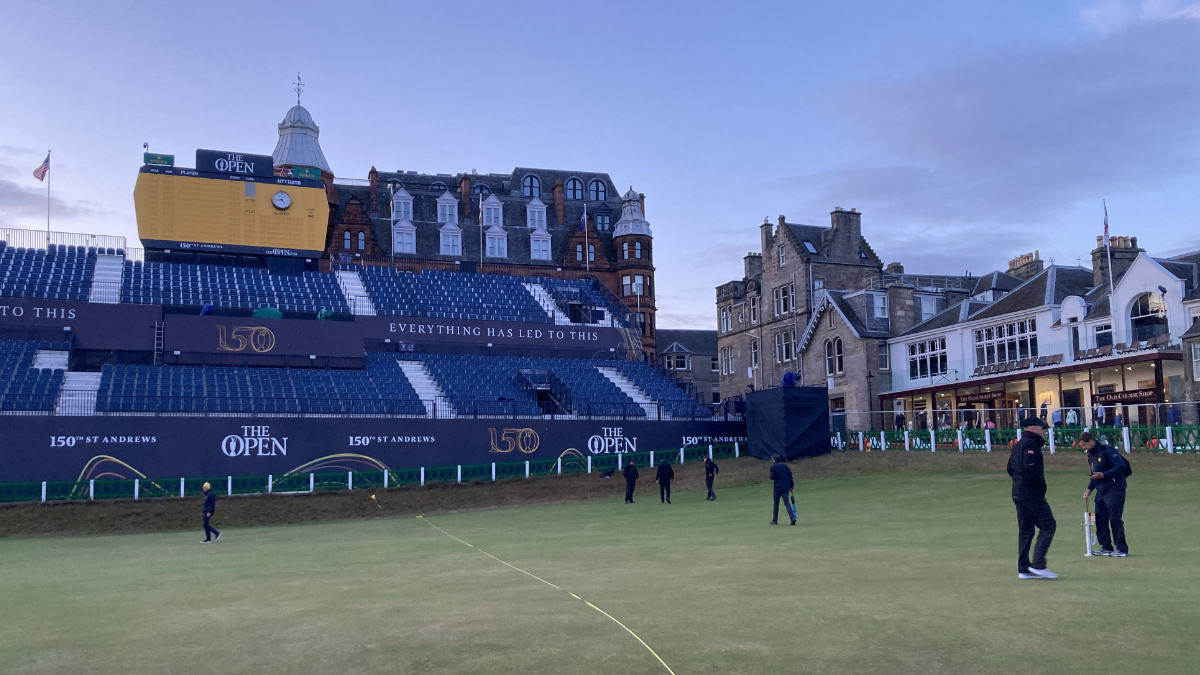
Other readings taken during this increasingly scientific practice of golf course preparation are moisture and hardness readings. It will come as no surprise, given the aforementioned drought, that the 30-40 readings taken on every green report the putting surfaces to be incredibly dry, while a piece of equipment called a Clegg Impact Hammer reports the hardness to be 176 gravities. A hard links course usually measures around 150 gravities, while a decent parkland course will be around 90.
Sandy said: “One hundred and fifty is as firm as you’d find on any golf course. That provides a good test and you will need to be striking the ball very well to control it, which they can do from tight fairways. They’ll be able to impact a bit of spin, but even if it’s a well-struck shot, the ball will take a couple of hops before it gets any control on the green.
“In conjunction with that, the greens are very dry yet healthy, which is great because it allows us to have firm greens, but keep the speeds at a reasonable level so they don’t get out of control.”
The final task on the greens, before they are signed off for the day’s play, is the placement of the pin position. Hole locations are generally decided weeks in advance, but a specific spot is selected within the week. The course closed three weeks ago, but prior to that the greenkeeping team were sure to keep hole locations well away from where they would be during championship week – a task made easier by the Old Course’s vast putting green areas.
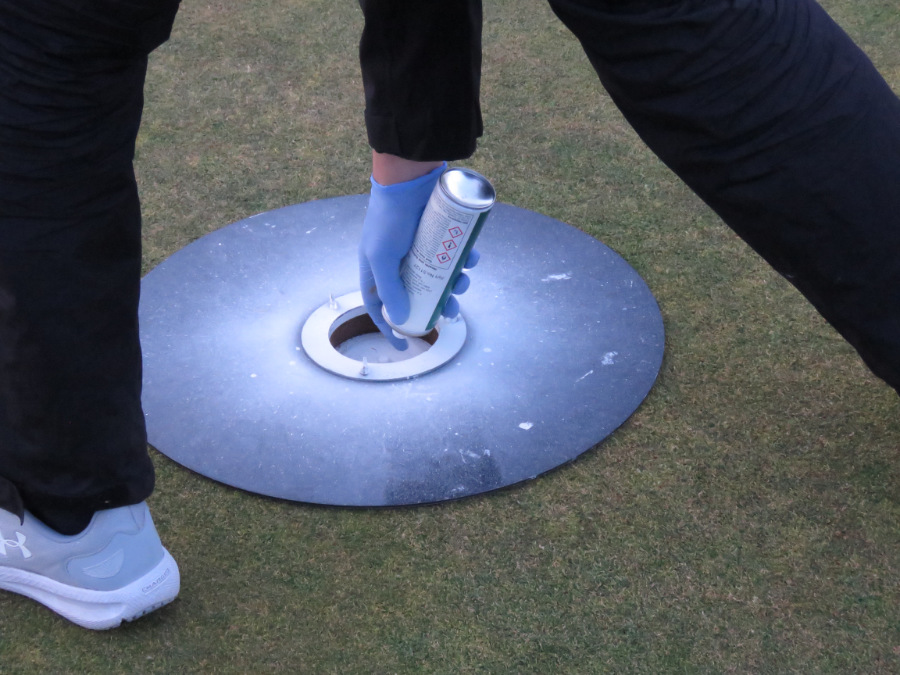
On the 18th the task of creating the hole falls to Gavin Neill, deputy course manager on the New and Jubilee courses and former St Andrews employee Craig Berry, now course manager at Leven Links.
This job is sweat-inducing at the best of times, but on the 18th hole at St Andrews on the opening day of The Open, there’s no greater pressure for a greenkeeper.
The precision is exquisite, from the cutting through that hard ground to the spray painting of around the inside to give that crisp white image that shows up so well on the television cameras. The flag must stand up perfectly vertically and there can be no stray leaves of grass impacting the circle. The hole, quite simply, must be perfect.
“This is the most stressful role this week,” said Sandy. “I painted holes at the 2007 Open, so I know the pressure they are under just now.”
After a long, almost silent, 10 minutes, the job is done. The St Andrews greenkeepers and The R&A team are happy and it’s on to the next hole, where the hard work of preparing the first green is already well underway. There’s a lot of work to do, but the greenkeepers know that these ancient links won’t let them down.
“We have a saying,” said Gordon. “The course knows when it needs to be ready.”
And as she’s already shown this week, the Old Course and the greenkeeping team that prepare it for the torture and delight of players and the enjoyment of millions of spectators, are certainly ready.
Author

Karl Hansell
Karl has been head of communications for BIGGA since March 2016. His duties include editing the monthly Greenkeeper International magazine, in addition to other communications activities for the association.
